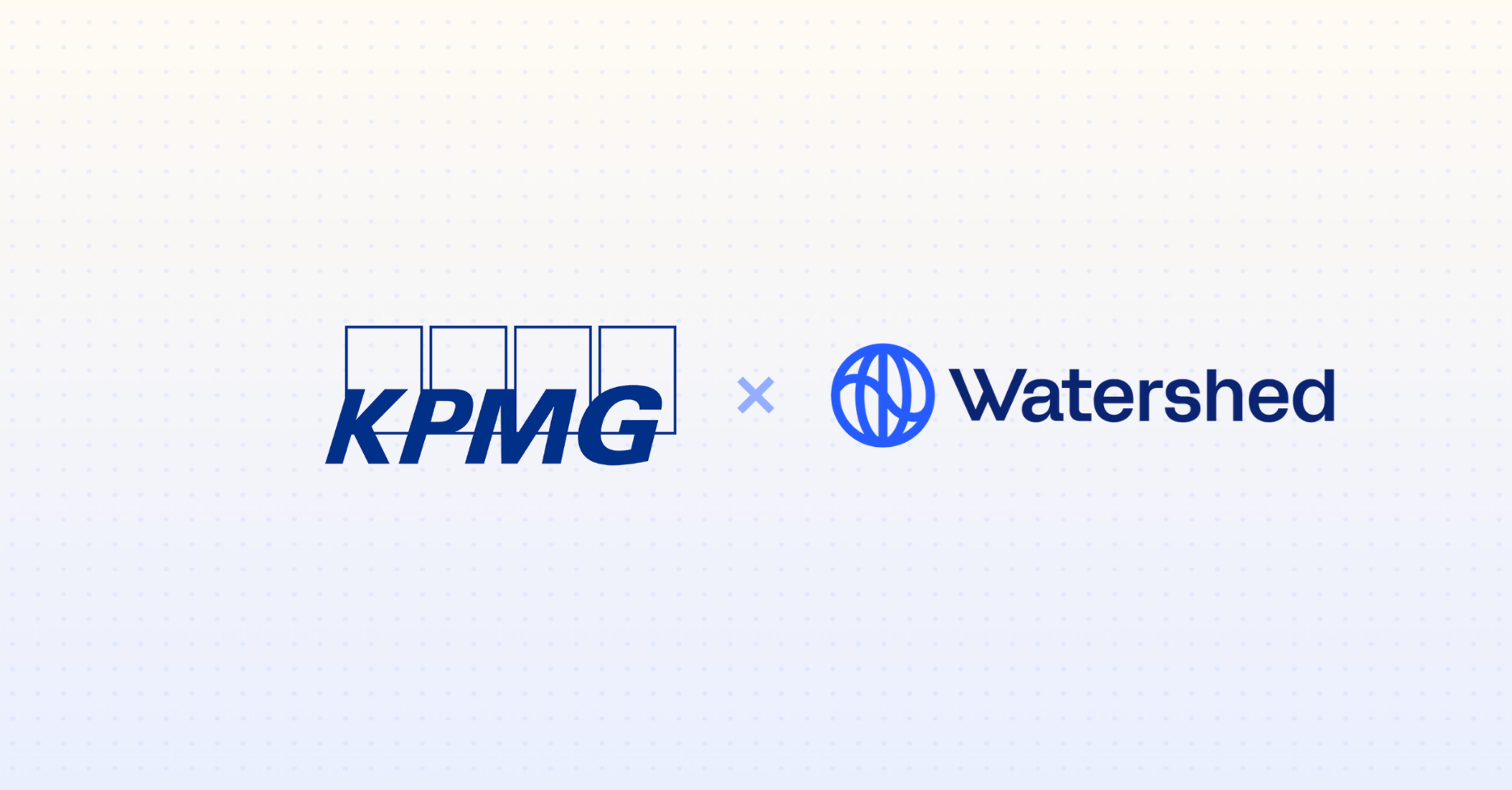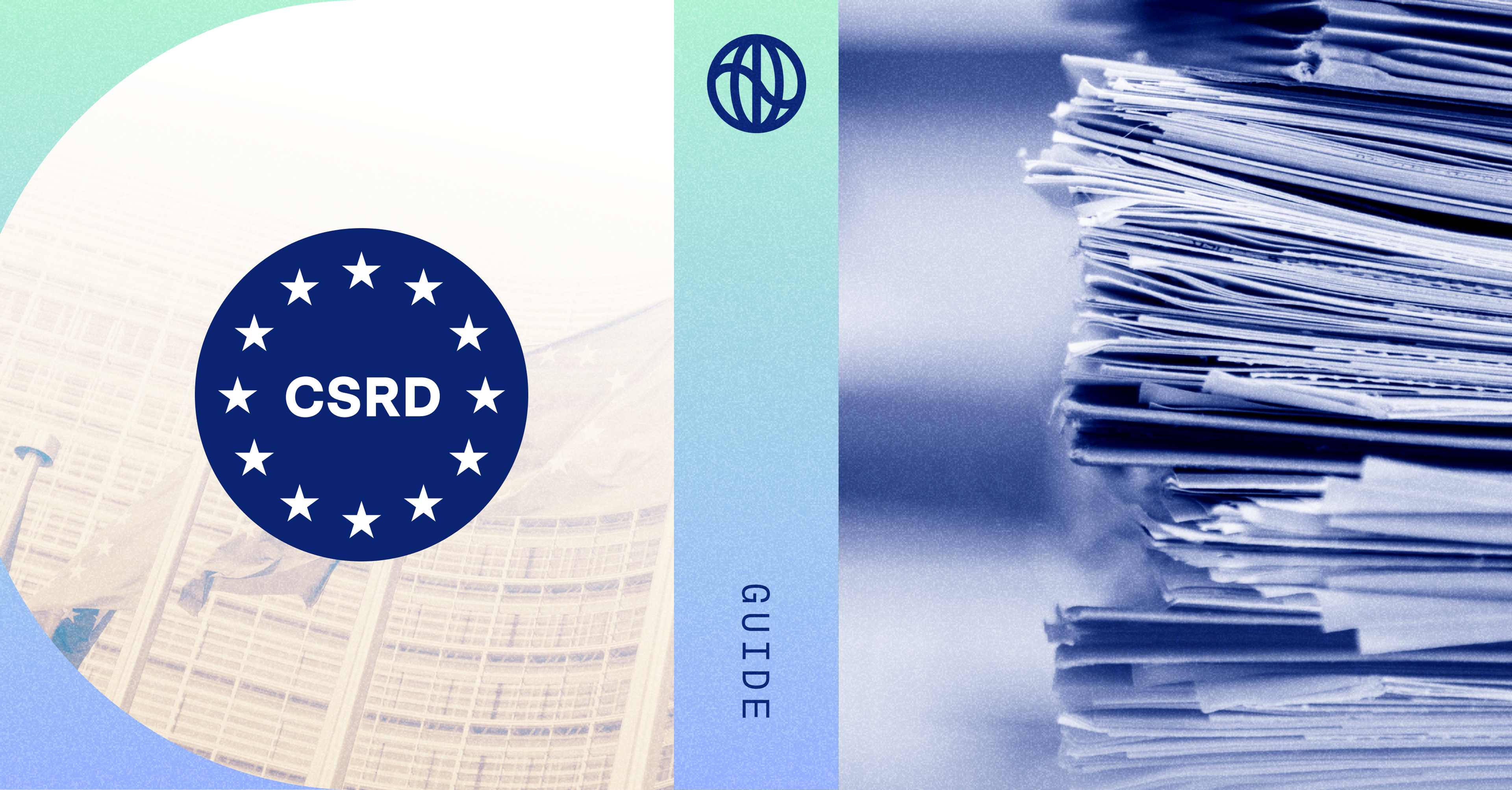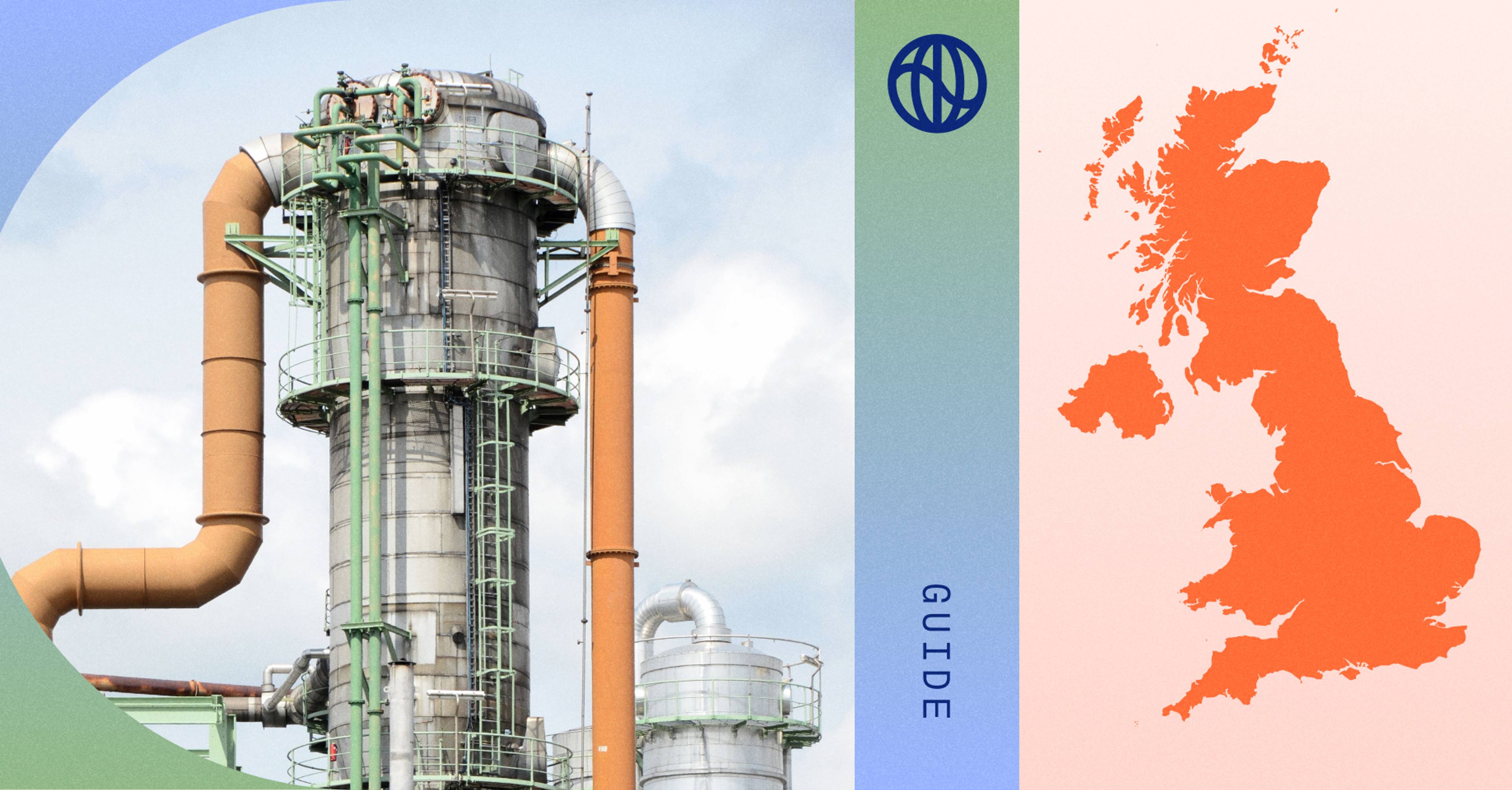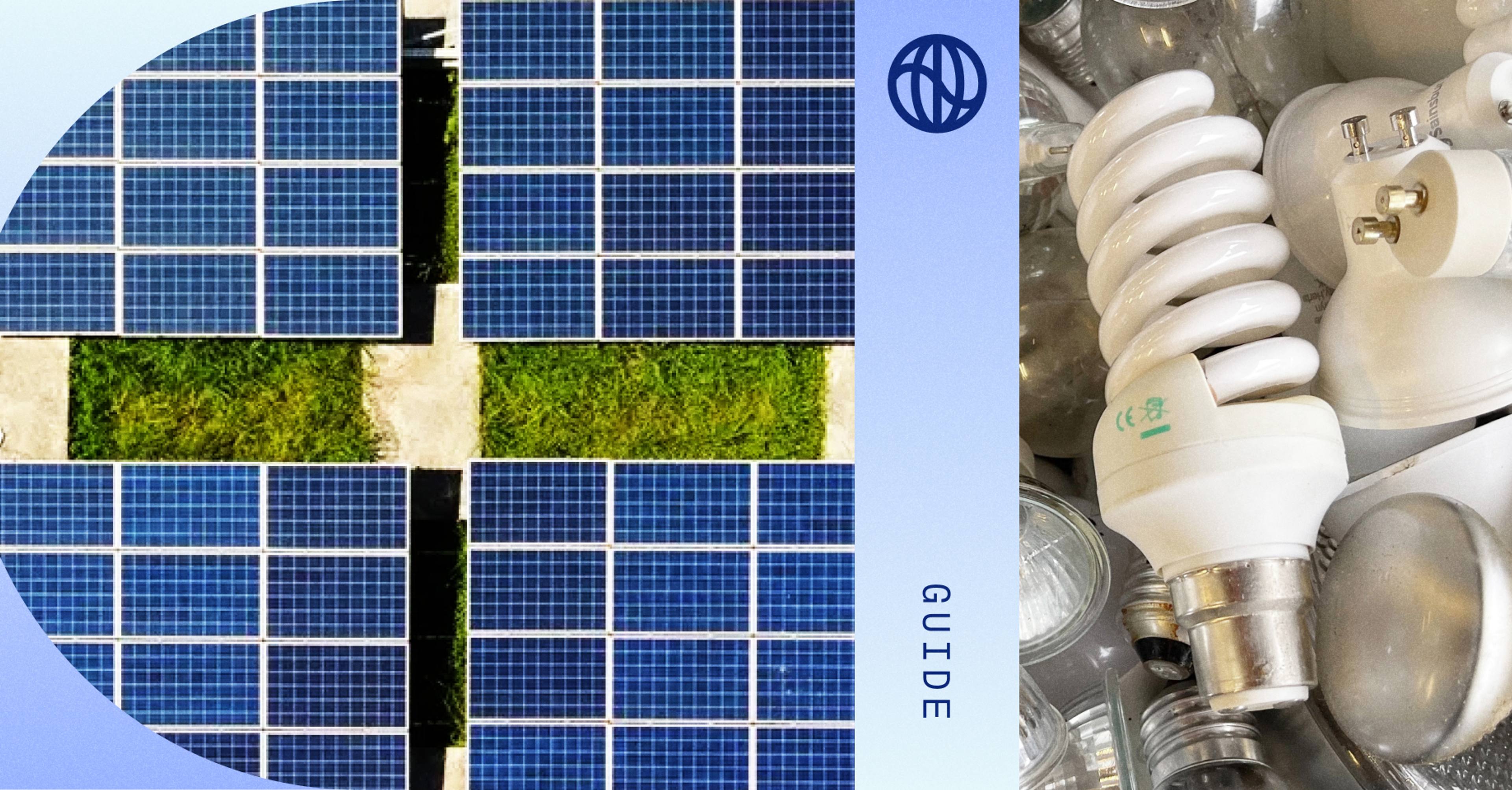Measuring carbon emissions is the foundation for real climate action. But measurement is complicated, and not all approaches are equal. The right one should be comprehensive and robust, unlocking the best next step for your climate program—whether that’s filling in gaps in your emissions footprint, drilling into hotspots to identify actionable carbon savings, or improving auditability to help you comply with increasingly complex reporting obligations.
Watershed helps leading organizations—like Walmart, Stripe, and Airbnb—measure, report, and act on emissions throughout their supply chains. In this guide we cover what companies need to know about measurement—from evaluating the major approaches to understanding where and why precision matters.
Some 101
Before we go into the weeds, let’s establish some base concepts and terminology for those just getting into the measurement game. Seasoned veterans can skip to the next section.
Common measurement terms
- CO2e - To include non-CO2 greenhouse gases like methane while still keeping things simple, carbon accountants harmonize all emissions into a single metric: carbon dioxide equivalents, or CO2e.
- Reporting standards - Large companies accounting for two-thirds of global public market capitalization already submit at least partial CO2e emissions data using voluntary disclosure frameworks based on TCFD. But far more detailed mandatory reporting standards are emerging on a national/regional basis (US, EU, UK).
- Scopes - The Greenhouse Gas Protocol categorizes emissions by Scope: Scope 1 covers direct emissions from company operations; Scope 2 covers emissions from the purchase of electricity, heat, and cooling; and Scope 3 covers your value chain.
Scope 3 is the new global focal point—and often represents more than 80% of a company’s total emissions. The best approaches to Scope 3 measurement allow companies to rapidly identify which suppliers to work with on which reductions—and ensure that no sources get overlooked.
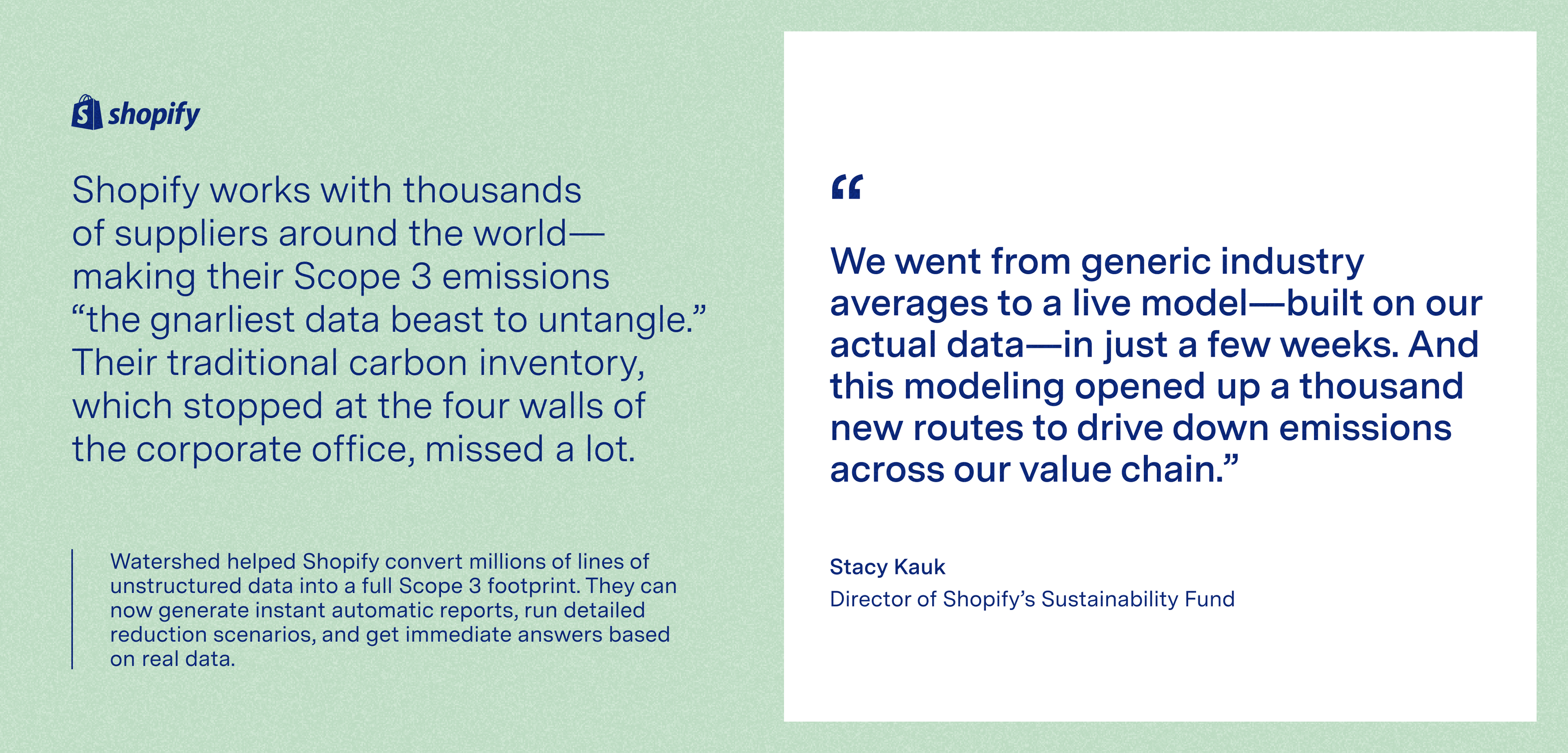
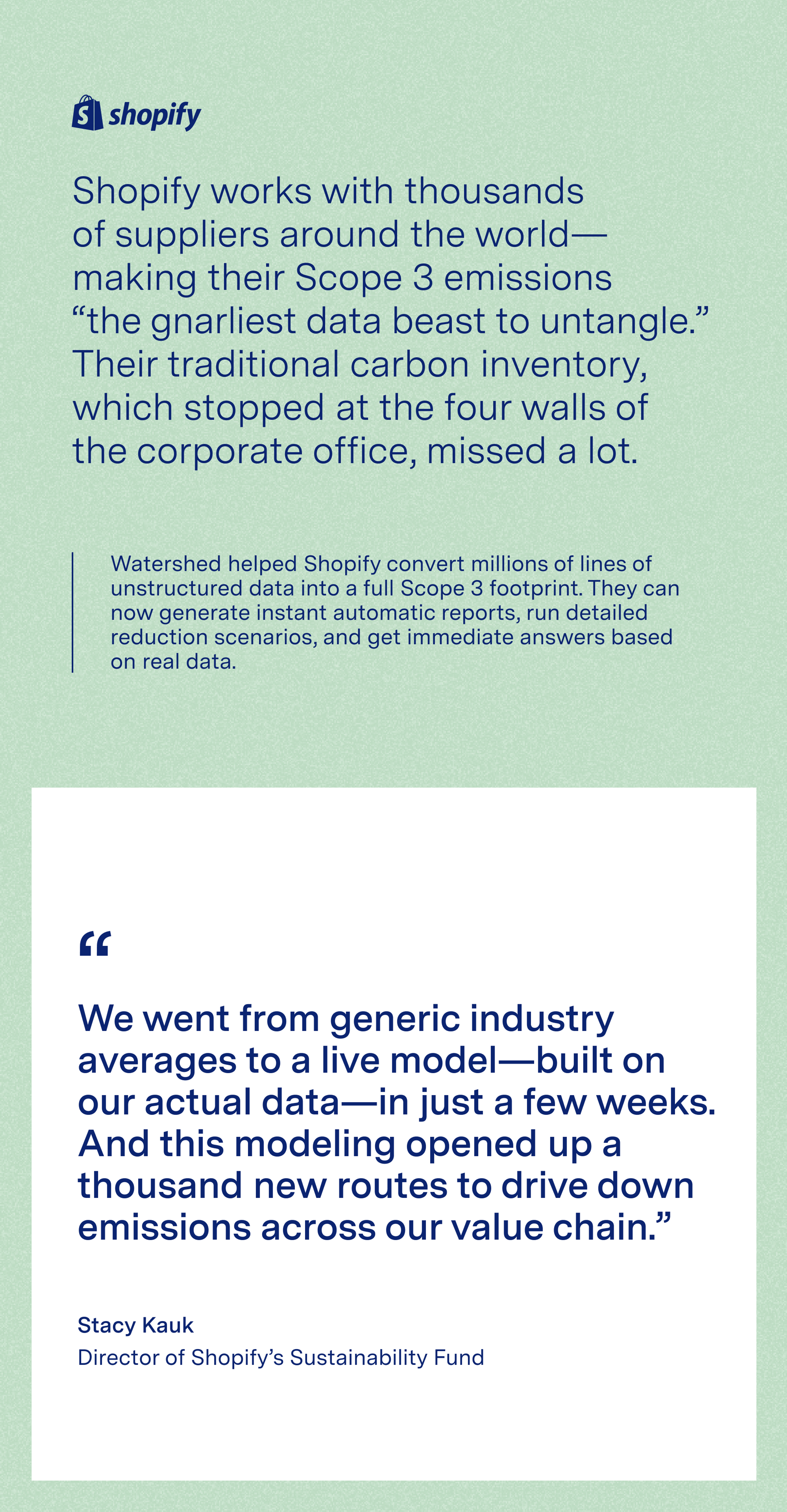
Goal-based measurement
While measurement can seem simple, there are two major approaches—each of which comes with tradeoffs and serves a complementary purpose:
- High-level measurement takes a broad survey of the whole company to identify emissions hotspots, including less-obvious emissions sources (like marketing spend)
- Granular measurement puts a specific product, process, project, or division under the microscope—unlocking a more precise sense of reductions opportunities.
We believe the right approach works backward from where you are in your climate action plan: if you’ve never done a footprint before, you likely want to start high-level; if you already know where your hotspots are, you can pull out the microscope right away. Or you can do both in parallel—e.g. high-level on general operating expenses and granular on specific products.
High-level
The standard high-level approach is to estimate emissions based on readily available business activities like spending—taking what’s easy to count and multiplying it by the closest possible estimate of how carbon-intensive each activity is. This multiplier is called an Emissions Factor (EF). The more precise the activity data, the more specific the EF that can be used, and the more accurate the resulting footprint.
Most carbon accounting software relies on EEIO EFs compiled by environmental researchers. But many of these EFs are several years old, generic, and/or unhelpfully broad—for example, one cloud computing company might now be far more carbon-intensive than another. To ensure these estimates are maximally useful, Watershed has engaged leading experts to develop and maintain a database of the most precise EFs possible.
The main advantage to high-level measurement is that it’s fast. Watershed can rapidly ingest data you already have on hand to help you understand your footprint in just days.
Granular
This is about precision and actionability—unlocking potential reductions by analyzing emissions at the level of specific suppliers and manufacturing methods. Sometimes there are real carbon savings in swapping something as small as the type of cheese in your salads. Every bit counts, and some opportunities are never obvious until you pull out the microscope.
Most granular measurements rely on life-cycle assessments (LCAs)—product-specific studies that track emissions all the way from raw materials to final disposal. Watershed’s software will soon dynamically visualize these LCAs to help climate leads communicate with their cross-functional peers using the most action-relevant level of detail.
The main advantage to granular measurement is that it’s tailored for action. Once you know your carbon hotspots, you’re ready to get tactical about where to spend your resources—e.g. on the largest emissions bucket, or the dirtiest sources with the best alternatives. If, say, a high-level measurement identified that laptop procurement was an unexpected hotspot, granular follow-up would help you quantify potential savings from switching brands or upgrade cycles.
Where accuracy matters
As you consider the right balance of approaches to use, scope control is key. There’s a tension between capturing every gram of carbon and unlocking meaningful action. While we advocate for using the most precise approach that meets your goals, you at least want to ensure that it’s:
- Comprehensive—i.e. you’re not leaving out easy-to-overlook sources of significant emissions—like catering or legal services
- Actionable—i.e. you’re unblocking real action—be that adopting cleaner energy sources, swapping suppliers, or rethinking your shipping practices
- Robust—i.e. you’re future-proofing against the data quality standards of increasingly stringent reporting programs
There were a few traditional ways to achieve this: a mix of in-house climate teams, software, and consultants. A key advantage of software is that it can pull in and organize data you already have in multiple places: ERP systems, travel apps, utility bills, purchase orders, and so on.
Watershed uses a three-step playbook:
- Ingest. By integrating with your key software and internal systems to pull data directly, we avoid the need for manual entry and the data-entry errors that come with it.
- Process. Our software cleans and neatly structures the data—supported by our carbon data analysts, who work with you to identify and address any gaps.
- Analyze. Our software uses predictive intelligence to identify the highest-impact reduction opportunities, which we then present using interactive data visualizations that let you both zoom into the critical details and zoom out to the big picture.
Verification readiness
Watershed’s software automatically detects anomalies and flags expected emissions sources not included in your import data, and ensures that all aggregated data can be exported in the report-specific formatting needed for SECR, CDP, and TCFD filings. Watershed regularly works with major auditing firms—along with other sustainability-focused assurance firms like Apex—to ensure that all generated reports are ready to withstand the highest levels of scrutiny.
Looking ahead to where verification and reporting are going, it’s also important that software solves the problem of disambiguating why emissions totals change—which can come from reductions measures, but can also represent methodological updates or societal improvements (eg. a local energy grid becoming cleaner). It’s important to have a partner that’s thinking hard about how to solve this complex accounting automatically—ensuring that you’re able to keep incorporating the latest science without sacrificing data interpretability.
Good software is also reinforced with human support—who can help you understand complex legislation, source clean power, and navigate the carbon credits market. Watershed’s teams of climate strategy, carbon data, and policy experts also help customers prepare for more complex filing programs—like GRI and SFDR—that can’t be fully automated.
If we can help with any of this, please get in touch.


